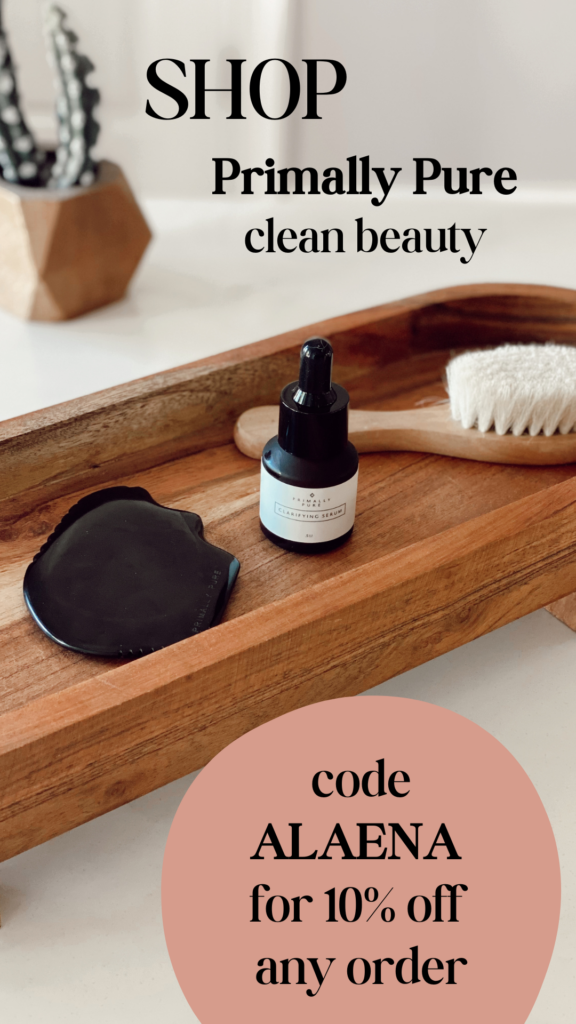Here’s my list of non-toxic sunscreen that works, and why you’ll want to toss that conventional Coppertone after reading this article.
For almost 3 decades, I slathered coconut-scented drugstore sunscreen all over my body for a good part of the year. When you grow up in Florida and spend as much time outside as I do, protecting yourself from the sun is important. While our beautiful sun provides us necessary vitamin D, boosts mood and regulates circadian rhythms, it can also can premature aging and skin cancer. But there’s a way to get responsible sun exposure while using non-toxic sunscreens that work. Keep reading.
Why sun exposure is important for health
Unprotected sun exposure allows for vitamin D synthesis through a metabolic process that involves the conversion of a vitamin D precursor to the useable form vitamin D3. Vitamin D3 can also be consumed through supplementation but sun exposure is more ideal, if possible. Vitamin D insufficiency has been linked to multiple sclerosis, cancer, neurological disorders, decreased immune function, mood disorders and insomnia. Spend a day outside at the beach and note the mental and physical benefits – a better night’s rest and an improved mood almost instantly!
Most people with fair to medium skin receive enough vitamin D conversion with 15 to 20 minutes 3 days a week of direct sunlight on 50% or more of skin exposed (i.e. arms, legs & back) during summer months. Darker skin individuals need longer unprotected exposure for similar vitamin D conversion. During fall and winter months, aim for 2x this amount of time 3 days a week at minimum.
But too much of a good thing can be a bad thing. We do need to protect our skin from the sun’s UVA rays which are associated with premature skin aging and UVB rays which are associated with the development of skin cancer.
I wear sunscreen when all three of these conditions are met:
-
Outside in direct sunlight with minimal clothing (i.e. no hat or long sleeves)
-
Unprotected for longer than 20 minutes between the hours of 10 am and 4pm
-
During spring and summer months
What ingredients do you want to avoid in your sunscreen?
-
Oxybenzone
-
Hormone disruptor that acts like estrogen in our body (i.e. a xenoestrogen)
-
Found in blood, urine & breastmilk samples from American population, meaning it penetrates the skin and infiltrates our circulatory system.
-
Associated with endometriosis in women
-
Alters sperm production in animals
-
High likelihood to cause skin allergy
-
Found in the urine of 97% of Americans when sampled by the CDC
-
-
Octinoxate
-
Found in breastmilk samples from American population, meaning it penetrates the skin and infiltrates our circulatory system
-
Hormone-like activity in the body
-
In animal studies, it alters thyroid, reproductive & behavioral systems
-
Moderate likelihood to cause skin allergy
-
-
Retinyl Palmitate
-
This is a carcinogenic form of vitamin A that speeds the speeds the development of skin cancer when skin is exposed to sunlight… yes you read that right!
-
Vitamin A toxicity can occur if applied in large amounts and repetitively over time.
-
Can form free radicals that contribute to aging
-
-
Fragrance
-
That familiar, noxious “sunscreen” scent may bring up feelings of nostalgic childhood trips to the beach, but it’s actually an unregulated harmful toxic that has been linked to allergies, immune toxicity and dermatitis. Companies don’t have to tell us which chemicals they use in their “fragrance/parfum” which is the most troubling part of it all.
-
(source: EWG “The Trouble with Oxybenzone“, “The Problem with Vitamin A“)
A note on SPF: No evidence exists that an SPF of greater than 50 provides a higher level of sun protection. In fact, many sunscreen manufacturers boost the perceived SPF level which only protects against UVB rays without increasing the UVA protection giving consumers a false sense of safety that they are properly protected from both types of rays.
How to switch your family to safer sunscreen
Mineral sunscreens provide quality, long-lasting broad-spectrum protection from premature aging and skin cancer without any of the above potential for toxic harm. Mineral sunscreens include zinc oxide and titanium dioxide, most commonly, and appear slightly white when applied. There is no evidence of hormone disruption from either of these minerals and they are unlikely to cause an allergic reaction.
Not all mineral sunscreens are created equally though. The suspension ingredients in some mineral sunscreens can still include some known harmful toxins that you may not want to put on your skin (and likely in your bloodstream). The trick is to find a company who screens and tests their suspension ingredients for safety like Beautycounter & Badger.
NON-TOXIC BODY SUNSCREEN
Beautycounter Countersun SPF30 Mineral Lotion and Mist
This non-toxic sunscreen has the lowest hazard rating in EWG’s Skin Deep Database while many of the drugstore brands sit in the avoid-at-all-costs high hazard categories.
-
Contains 19% non-nano zinc oxide for broad-spectrum UVA & UVB protection that doesn’t penetrate deeper than skin level
-
Light citrus scent
-
California poppy seed extract for protecting skin against harmful blue light
-
Water-resistant: apply every 40 minutes for best protection
-
Lightweight and very easy to blend (no white cast)
-
Safe to use on adults and children
HOW TO USE BEAUTYCOUNTER’S NON-TOXIC SUNSCREEN
Apply liberally 15 minutes before sun exposure. Reapply after 40 minutes of swimming or sweating; immediately after towel drying; at least every 2 hours. Children under 6 months: Ask a doctor.
I use all of Beautycounter’s Sunscreen products on myself and my daughter. I used to break out in a fine, red skin rash from drugstore sunscreens (likely from the oxybenzone) and am happy to report, I have not experienced a single reaction from these products! Neither my daughter nor I have burned while using them either!
NON-TOXIC FACE SUNSCREEN
Beautycounter Countersun SPF30 Mineral Sunscreen Stick
This sunscreen is easily portable, easy to apply to the hard to reach places like ears, the back of youDonr neck, and shoulders AND it smells amazing (just a little like fruit and cocoa butter). I keep it in my diaper bag and one in my stroller so that I am always able to protect myself and my daughter from overexposure!
-
Contains 15.4% non-nano zinc oxide to safely protect skin from the sun
-
Suspended with shea butter, cocoa butter and fruit oils to help hydrate the skin and make the sunscreen easy to apply and blend
-
Can be worn under or over makeup daily
-
Easily applied by children
-
Easy to apply to babies without excessive rubbing on their delicate skin
Curious why Beautycounter caps their SPF at 30? Higher SPF isn’t always a good thing, and in fact it actually becomes pretty useless after SPF30. Here’s a handy guide for keeping safe in the sun while using non-toxic sunscreen.











One Response